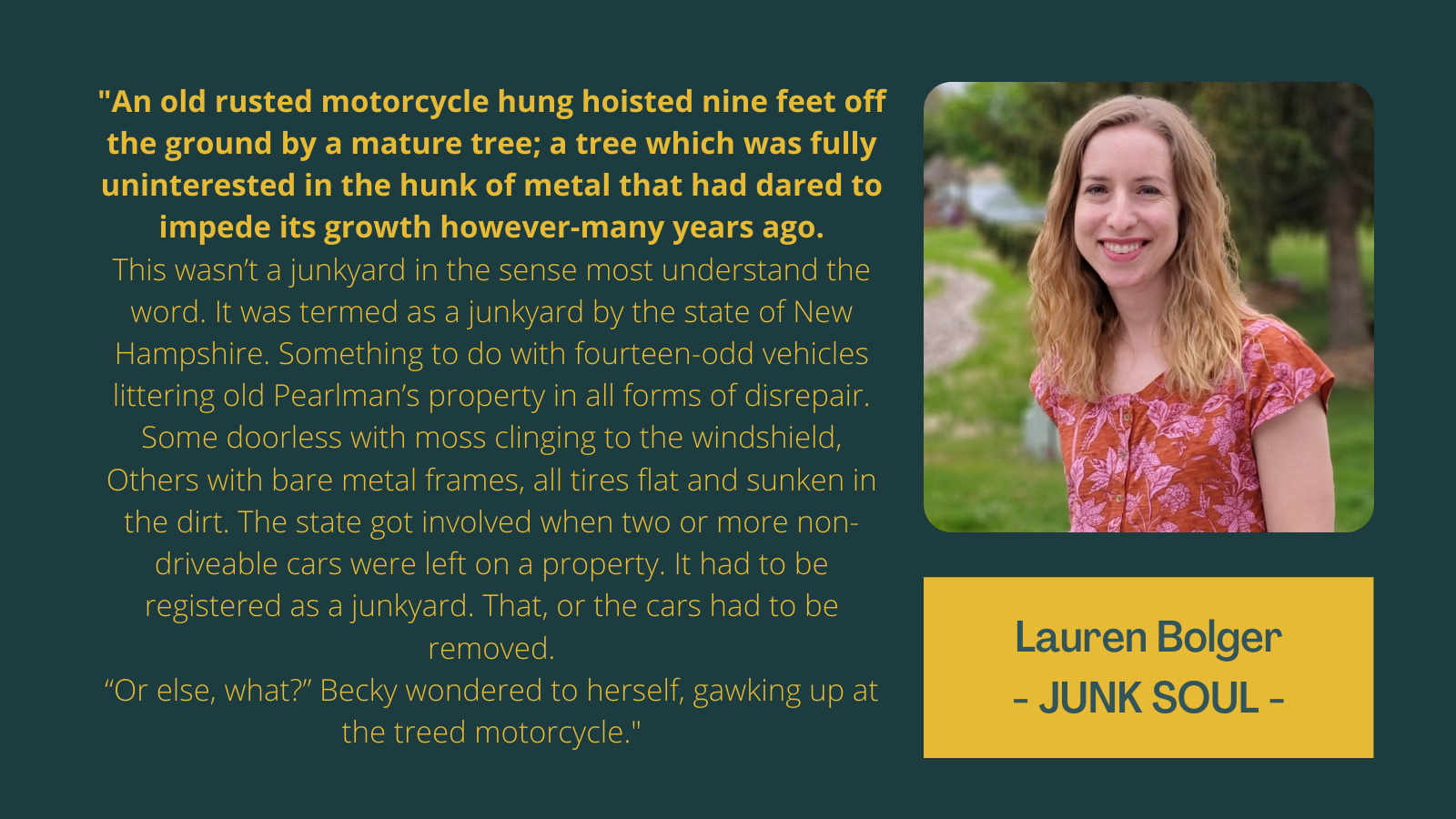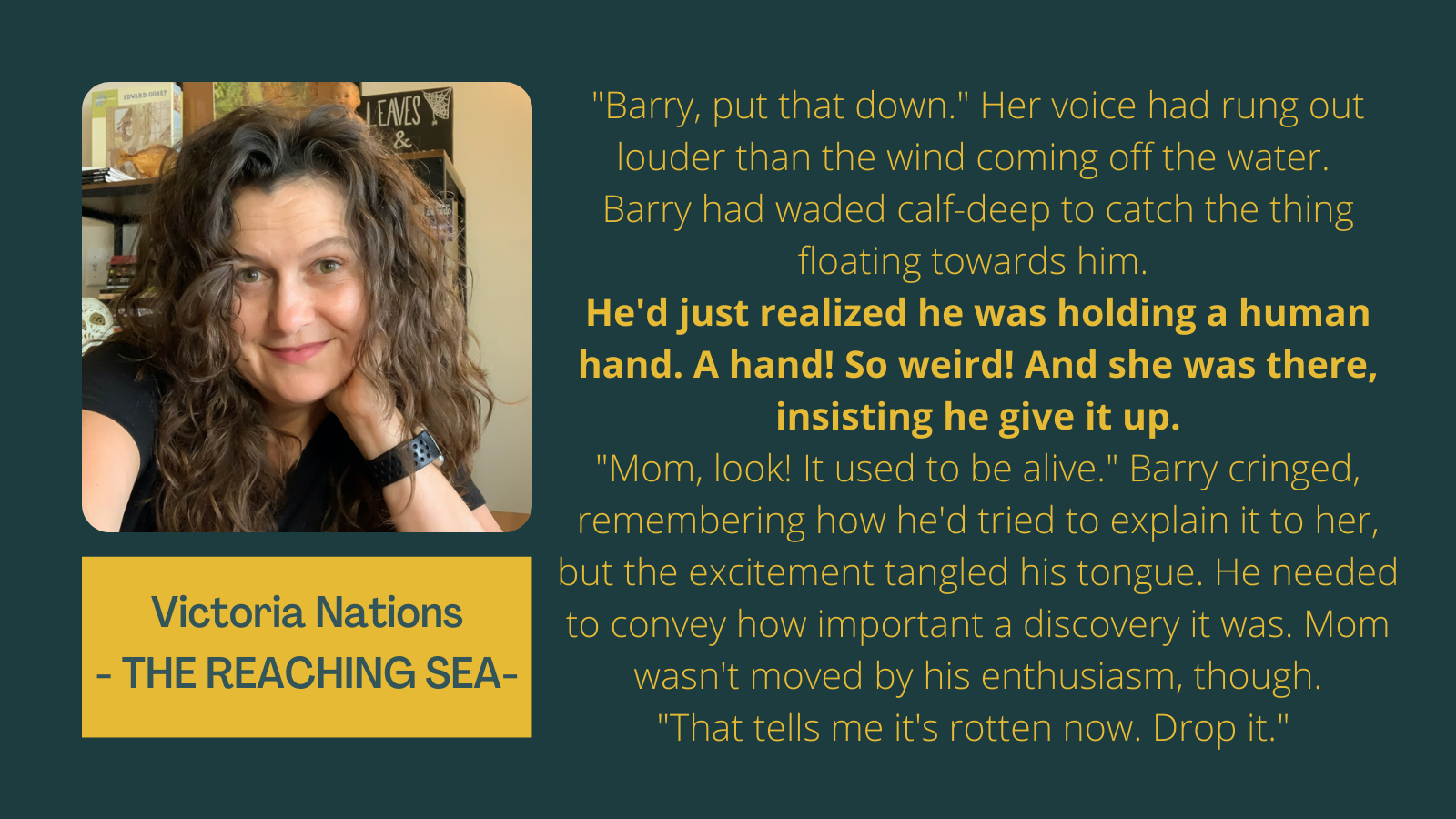Briana Una McGuckin's gothic and fabulist fiction appears in the 2020 Stoker-nominated anthology Not All Monsters (Rooster Republic Press), as well as The Arcanist and Hides the Dark Tower (Pole-to-Pole Publishing). She has an M.F.A. in Creative Writing from Western Connecticut State University.
A tragic fable—or fabulous tragedy?—that will haunt you long after it ends, AFTER THE APPLES paints a world of foxes, madness, and that gun on the farmer’s porch…
IN SOMNIO editor Alex Woodroe digs deeper:
(CW: alcohol use disorder)
***
AW: Does your story touch on anything personal to you?
BM: Absolutely. Widow Wit, the mother fox in this story, manages her pain by eating these fermenting apples that fall at the edge of her forest, and her young kit doesn’t know how to deal with it. I grew up around a few alcoholic adults, and I wanted to tell a story about what it’s like to know someone who drinks like that when you’re young, to love them deeply. Not to put those people in a bad light, but to show how complicated it is: how much they love you when they’re sober, and how they may not even know the ways they hurt you when they’re not—because they don’t remember. Then suddenly there are these things that happened but don’t get talked about, out of fear and out of embarrassment, but also out of love. I wanted to be fair to both characters, the complexity of their bond, while also pointing out that that dynamic, of ignoring truths just to spare our loved ones who are struggling, creates new problems in ourselves. It sows self-doubt, and erodes trust in other people too, and that’s a very lonely reality. It’s dangerous.
AW: What little things bring you joy?
BM: Smells. I collect perfume oils, which are subtler and truer smells than alcohol-based perfumes, and often made to smell like interesting things: the earth after rain, or hot chocolate. I have an embarrassing number of different ones—one that smells like a bonfire, one that smells like typewriter paper, one that smells like a church. You get the idea. But I don’t judge myself too much, because I wear them in my writing practice, to evoke settings, or characters, or moods for whatever I’m working on. It really helps to place me in the story.
AW: Do you have any specific formative memories that roped you into Gothic fiction?
BM: I think it was watching Beauty and the Beast that did it, first. The prologue is haunting, with the stained glass vignettes, and Alan Menken’s dark reinterpretation of “Aquarium” (from Camille Saint-Saens’s Carnival of Animals) playing underneath. It takes my breath away even now. I am fascinated by the foreboding of it, and the foreshadowing of love—of hope. I think every Gothic romance is, more or less, the Beauty and the Beast fairytale. Rebecca certainly is. Jane Eyre is. Dracula…Well. Dracula is the beautiful, terrifying exception. I was so appalled to learn how badly Hollywood had misinterpreted Dracula. Stoker would be furious with Coppola for having the nerve to call it Bram Stoker’s Dracula. But that’s a tangent I won’t go on. Anyway, long live Beauty and the Beast.
AW: Did you ever embrace the Goth culture? Carry a parasol? Do you still? If not, what was your teen ‘scene’?
BM: I did not have the budget to embrace true Goth culture until after college, when I could splurge on a nice pseudo-Victorian dress or cape. I don’t go out like that, but I dress very eccentrically at home. Petticoats are vastly underrated undergarments. I have some that are so lovely I wear them as skirts in themselves.
AW: Why Horror? Are you and Horror exclusive, and if not, what else do you flirt with?
BM: I feel I barely write horror, that I’m an imposter in the genre. I probably shouldn’t count myself out so much. To answer your question, I am very aware of the connection between fear and excitement, between dread and anticipation. They are so close to each other that they touch, and often that touching is electric, in almost a sensual way. That fascination, with sensuality and startling vividness, leads me some other places: fabulist fiction, and some romantic fantasy. I’ll go anywhere there’s room to suggest that there is more going on between people than just what can be objectively observed.
AW: Where can people see more of your past/upcoming work?
BM: In addition to IN SOMNIO, I have a piece coming out in The Lost Librarian’s Grave in October of this year, which I’m especially excited about because I am a librarian myself. The story is called “Good Boy Anyway,” and it’s about a grave-digger who is haunted by his recently deceased wife. More on that here: https://redwood-press.com/ My blog has links to other anthologies (and some electronic publications) I’ve contributed to. That’s here: https://moonmissives.com/find-my-fiction/
***
IN HER OWN WORDS:
Briana explains the origins of her story AFTER THE APPLES and reads a selection from it; follow the IN SOMNIO Kickstarter here!





























